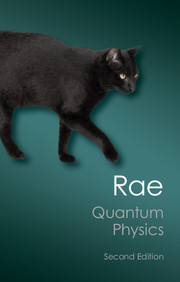Book contents
- Frontmatter
- Dedication
- Contents
- Preface to the first edition
- Preface to the second edition
- 1 Quantum physics
- 2 Which way are the photons pointing?
- 3 What can be hidden in a pair of photons?
- 4 Wonderful Copenhagen?
- 5 Is it all in the mind?
- 6 Many worlds
- 7 Is it a matter of size?
- 8 Backwards and forwards
- 9 Only one way forward?
- 10 Can we be consistent?
- 11 Illusion or reality?
- Further reading
- Index
3 - What can be hidden in a pair of photons?
Published online by Cambridge University Press: 05 February 2014
- Frontmatter
- Dedication
- Contents
- Preface to the first edition
- Preface to the second edition
- 1 Quantum physics
- 2 Which way are the photons pointing?
- 3 What can be hidden in a pair of photons?
- 4 Wonderful Copenhagen?
- 5 Is it all in the mind?
- 6 Many worlds
- 7 Is it a matter of size?
- 8 Backwards and forwards
- 9 Only one way forward?
- 10 Can we be consistent?
- 11 Illusion or reality?
- Further reading
- Index
Summary
Albert Einstein's comment that ‘God does not play dice’ sums up the way many people react when they first encounter the ideas discussed in the previous chapters. How can it be that some future events are not completely determined by the way things are at present? How can a cause have two or more possible effects? If the choice of future events is not determined by natural laws does it mean that some supernatural force (God?) is involved wherever a quantum event occurs? Questions of this kind trouble many students of physics, though most get used to the conceptual problems, say ‘Nature is just like that’ and apply the ideas of quantum physics to their study or research without worrying about their fundamental truth or falsity. Some, however, never get used to the, at least apparent, contradictions. Others believe that the fundamental processes underlying the basic physics of the universe must be describable in deterministic, or at least realistic, terms and are therefore attracted by hidden-variable theories. Einstein was one of those. He stood out obstinately against the growing consensus of opinion in the 1920s and 30s that was prepared to accept indeterminism and the lack of objective realism as a price to be paid for a theory that was proving so successful in a wide variety of practical situations. Ironically, however, Einstein's greatest contribution to the field was not some subtle explanation of the underlying structure of quantum physics but the exposure of yet another surprising consequence of quantum theory.
- Type
- Chapter
- Information
- Quantum PhysicsIllusion or Reality?, pp. 31 - 47Publisher: Cambridge University PressPrint publication year: 2012



